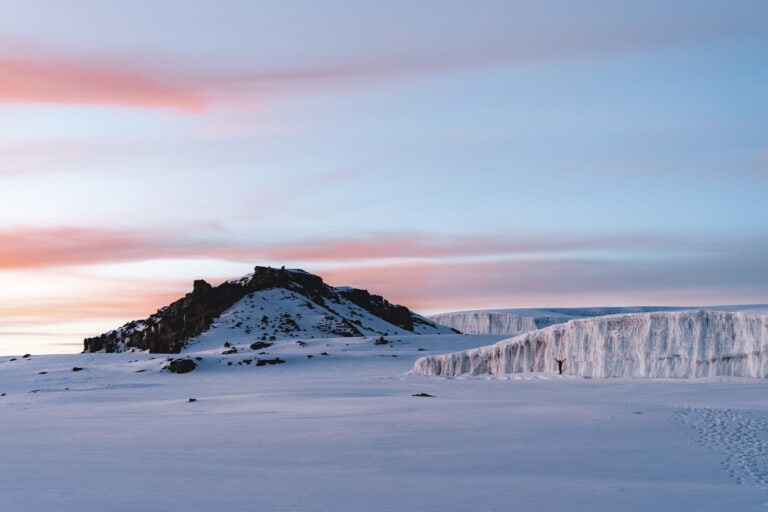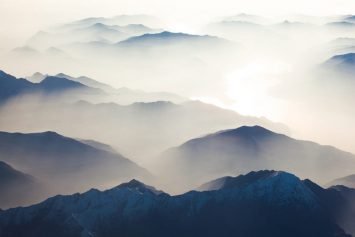If you’re an adventurous traveler, and you’re considering climbing Mount Kilimanjaro, you’re in for a thrilling experience. To ensure your journey to the “Roof of Africa” is memorable for all the right reasons, it’s essential to be well-prepared. In this guide, we’ll cover everything you need to know before embarking on this epic adventure.

Quick Navigation
ToggleUnderstanding Kilimanjaro
Before you start planning your Kilimanjaro climb, it’s crucial to understand the basics.
Geography and Location
Mount Kilimanjaro is the tallest free-standing mountain in the world, located in Tanzania. It stands at a breathtaking 19,341 feet (5,895 meters) above sea level. The mountain’s diverse ecosystems, stunning vistas, and challenging terrain make it a popular choice for adventure seekers.
Altitude and Climate
The mountain’s diverse ecosystems are a consequence of its remarkable altitude variations. Scaling Kilimanjaro entails ascending from the lush rainforest at its base to alpine meadows and ultimately reaching the glacial summit. This diversity means that you’ll experience a wide range of climates during your ascent, ranging from approximately 2,800 meters (9,186 feet) above sea level in the hot and humid lower elevations to sub-zero temperatures at the summit, which stands at an imposing 5,895 meters (19,341 feet) above sea level.
Wildlife and Flora
Kilimanjaro is not just a geological wonder; it’s also home to unique flora and fauna. As you trek through its various zones, you’ll encounter a wide variety of plant and animal species, including colobus monkeys, leopards, and rare endemic plants.
Keep your eyes open for these remarkable natural wonders as you make your way to the summit.
Budgeting for Your Kilimanjaro Adventure
Climbing Mount Kilimanjaro is an experience that comes with various costs. The total cost of climbing Kilimanjaro includes several components, and it’s essential to understand them to plan your expedition effectively. In this guide, we’ll break down the expenses involved in climbing Kilimanjaro, providing you with a clear picture of what to expect.

1. Park Fees and Permits
To access Kilimanjaro, you’ll need to pay park fees and obtain climbing permits. These fees are set by the Tanzanian government and are essential to help conserve the natural beauty of Kilimanjaro National Park and its surrounding areas.
The cost of these fees depends on the route you choose, the number of days you spend on the mountain, and your nationality. On average, park fees and permits can range from $700 to $1,000 or more.
2. Tour Operator Costs
Most climbers opt to go with a tour operator, as they provide essential services such as guides, porters, accommodations, meals, and transportation to and from the mountain. The cost of a tour operator can vary significantly based on the level of service and the route you choose. On average, budget operators may charge around $1,000 to $2,000, while premium operators can cost upwards of $4,000 or more.
3. Gear and Equipment
Proper gear and equipment are crucial for a safe and comfortable Kilimanjaro climb. You may need to invest in hiking boots, warm clothing, waterproof gear, a sleeping bag, and other essentials. Renting it is also an option but it can sometimes cost more to rent it for a long duration of time, and you cannot ensure the quality 100%. The cost of gear and equipment can vary widely, but budgeting around $500 to $1,000 is a reasonable estimate.
4. Flights and Travel Expenses
Getting to Tanzania is an additional cost to consider. International flights to Kilimanjaro International Airport (JRO) or other major airports in Tanzania can vary greatly in price depending on your departure location and the time of booking. On average, expect to spend between $800 to $2,000 or more on round-trip flights. Additionally, consider travel insurance, visas, and any pre- or post-climb accommodations in your budget.
5. Tips and Gratuity
It’s customary to tip your guides, porters, and other support staff after your Kilimanjaro climb. While the exact amount can vary, a general guideline is to allocate around 10% to 15% of your tour operator’s total cost for tips.
6. Miscellaneous Expenses
There may be additional expenses such as travel vaccinations, medical checks, and personal spending during your climb. It’s wise to budget an extra $200 to $500 for these miscellaneous expenses.
Total Cost Estimates
To provide a rough estimate, the total cost of climbing Kilimanjaro can range from approximately $2,500 to $7,000 or more. The final amount depends on factors such as the route you choose, the quality of the tour operator, the duration of your climb, and your personal preferences.
The Right Expert Advice
One of the most valuable pieces of advice you can receive when preparing for a Kilimanjaro climb is from someone with extensive experience. Marvin Derichs, a climbing expert at Altezza Travel, recommends starting your preparations well in advance. He emphasizes the importance of physical fitness, proper gear, and acclimatization. Marvin also suggests choosing a reputable tour operator like Altezza Travel, known for their expertise in Kilimanjaro climbs.
Marvin Derichs shares, “Climbing Kilimanjaro is a once-in-a-lifetime experience, and preparation is key. Take the time to train your body, get the right gear, and acclimatize properly. A trusted tour operator like Altezza Travel can make a world of difference in ensuring your safety and enjoyment during the trek.”

Government Resources
When planning a Kilimanjaro climb, it’s essential to stay informed about local regulations, permits, and safety guidelines. Here are some government websites that provide valuable information:
Tanzanian National Parks Authority (TANAPA): TANAPA manages the Kilimanjaro National Park and provides details on park fees, rules, and regulations.
Tanzania Tourist Board: This official tourism board offers information on travel to Tanzania, including visa requirements and cultural tips.
US Department of State – Tanzania Travel Advisory: If you’re a U.S. citizen, this website provides essential safety and security information for travelers to Tanzania.
Preparing for the Climb
Now that you have some background information let’s dive into the steps you should take to prepare for your Kilimanjaro adventure:
1. Physical Fitness
Climbing Kilimanjaro requires a good level of physical fitness. You’ll be trekking for several days at high altitudes, so it’s crucial to build your stamina and endurance. Regular cardio workouts, hiking, and strength training will prepare your body for the challenges ahead.
2. Choose the Right Route
Kilimanjaro offers several routes, each with its own unique features and difficulties. Research and select a route that suits your fitness level and interests, such as the Machame and Lemosho routes which are popular choices for their scenic beauty.
3. Acclimatization
Proper acclimatization is crucial to prevent altitude sickness. Choose an itinerary that allows for gradual ascent and built-in rest days. Drinking plenty of water and eating a balanced diet will also aid acclimatization.
4. Pack Wisely
Pack light but don’t forget essentials like sunscreen, a first-aid kit, and a headlamp. Altitude sickness pills is also a must. Overpacking can make your climb more challenging.
5. Book with a Reputable Tour Operator
As Marvin Derichs advised, partnering with an experienced tour operator like Altezza Travel can greatly enhance your Kilimanjaro experience. They provide knowledgeable guides, safety measures, and comfortable accommodations during the trek.

Conclusion
Climbing Kilimanjaro is a dream for many, and with the right preparation and expert guidance, it can become a reality. Remember to stay informed through government resources, prioritize physical fitness, and invest in proper gear. With determination and careful planning, you’ll be standing on the summit of Kilimanjaro, taking in the awe-inspiring views of Africa’s highest peak.
So, are you ready to embark on this incredible journey to the top of the world? Start your preparations today, and Kilimanjaro’s majestic summit awaits you!


